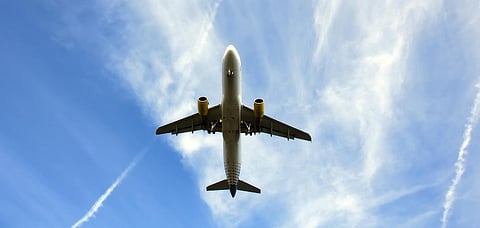
- Destinations
- Experiences
- Stay
- What's new
- Editor’s Picks
- Responsible Tourism
- CampaignsCampaigns
- Subscribe

More Indians are taking to the skies revealed the World Air Transport Statistics (WATS) 2017 published by the International Air Transport Association (IATA).
According to the report, India ranked third among passenger traffic by nationality, with United States of America (US) and the People&rsquos Republic of China (PRC) bagging the top two positions, respectively. The fourth and fifth positions were bagged by United Kingdom (UK) and Germany, respectively.
However, India (161.5 million or 4.7 per cent of all passengers) was significantly behind the US (632 million representing 18.6 per cent of all passengers) and PRC (555 million or 16.3 per cent of all passengers) but better off compared to the UK (147 million or 4.3 per cent of all passengers) and Germany (114.4 million or 3.4 per cent of all passengers).
This is the first time that ranking of passenger traffic by nationality, for international and domestic travel, was undertaken, WATS said in its report. Nationality here refers to the passenger&rsquos citizenship as opposed to the country of residence.
System-wide, airlines carried 4.1 billion passengers on scheduled services, an increase of 7.3 per cent over 2016, representing an additional 280 million trips by air. This was supported by a broad-based improvement in global economic conditions and lower average airfares, according to the report.
At the same time, airlines connected a record number of cities worldwide, providing regular services to over 20,000 city pairs in 2017, more than double the level of 1995. Such increases in direct services improve the industry&rsquos efficiency by cutting costs and saving time for both travellers and shippers alike, the report said. City pairs are counted uni-directionally and only for aircraft with more than 19 seats and at least one flight frequency on average per week.
Connectivity can also be calculated by routes which now total more than 55,000, the report clarified.  Routes are based on airport (not city) pairs and are counted bi-directionally, regardless of aircraft size and flight frequency.
Airlines in the Asia-Pacific region once again carried the largest number of passengers, the report said. Asia-Pacific, with 36.3per cent market share (1.5 billion passengers, up 10.6 per cent compared to the region&rsquos passengers in 2016), topped the regional rankings. These are based on total passengers carried on scheduled services by airlines registered in that region. Second to fifth places went to Europe (26.3 per cent market share up 8.2 per cent), North America (23 per cent market share, up 3.2 per cent), Latin America (7per cent market share, up 4.1per cent), Middle East (5.3 per cent market share, up 4.6 per cent) and Africa (2.2 per cent market share, up 6.6 per cent).
The top five airlines ranked by total scheduled passenger kilometres flown, were American Airlines (324 billion), Delta Air Lines (316.3 billion), United Airlines (311 billion), Emirates Airline (289 billion) and Southwest Airlines (207.7 billion).
The top five international/regional passenger airport-pairs were all within the Asia-Pacific region, again this year. Airport pairs are counted bi-directionally on an origin-destination basis, including traffic that may have had intermediate connections, the report said. The top five positions were occupied by Hong Kong-Taipei Taoyuan (5.4 million, up 1.8 per cent from 2016), Jakarta Soekarno-Hatta-Singapore (3.3 million, up 0.8 per cent), Bangkok Suvarnabhumi-Hong Kong (3.1 million, up 3.5 per cent), Kuala Lumpur&ndashSingapore (2.8 million, down. 0.3 per cent) and Hong Kong-Seoul Incheon (2.7 million, down 2.2 per cent from 2016).
Under similar consideration, the top five domestic passenger airport-pairs were Jeju-Seoul Gimpo (13.5 million, up 14.8 per cent over 2016), Melbourne Tullamarine-Sydney (7.8 million, up 0.4per cent), Fukuoka-Tokyo Haneda (7.6 million, up 6.1 per cent), Sapporo-Tokyo Haneda (7.4 million, up 4.6 per cent), Beijing Capital-Shanghai Hongqiao (6.4 million, up 1.9 per cent from 2016). Here too Asia Pacific scored over the rest of the world.
IATA represents some 290 airlines comprising 82 per cent of global air traffic.
